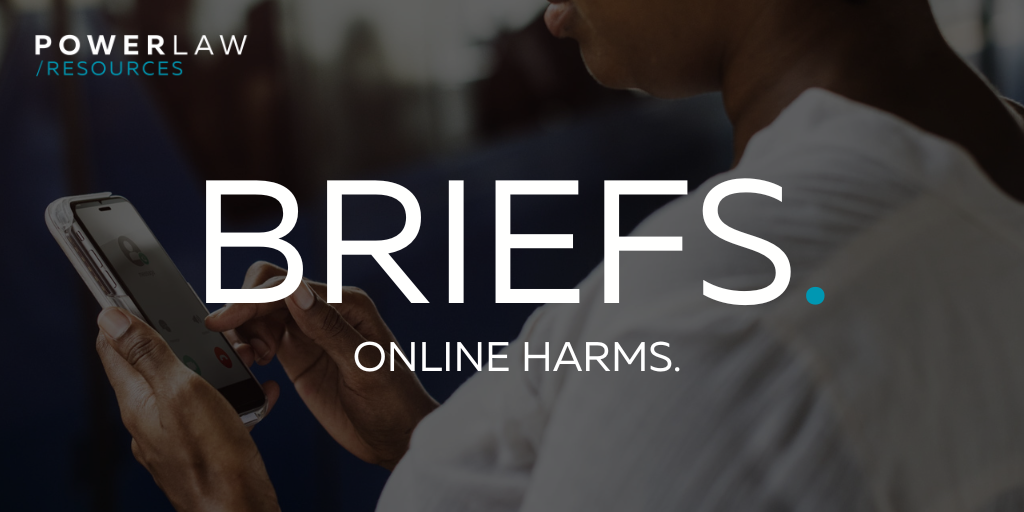Back to school: Protecting your child’s digital footprint
In this brief, candidate legal practitioner Sophie Smit unpacks considerations for parents on protecting their children’s online presence and digital footprint.
As the start of the school year approaches, parents are gearing up for stationery runs, drop-offs and the rush that comes with a new year. During all the excitement, many proud parents share images online of their children starting school – but it’s important to be mindful of what details you might be sharing without realising it.
For example, sharing pictures of your child’s first day in a grade 1 uniform can communicate their age, school and location.
There are also legal rights and implications for parents to consider in the protection and promotion of children’s rights within this digital environment. The term “sharenting” describes the “increasingly popular habit of parents to share photos, videos, or other information regarding their children on their social profiles, through online platforms. By sharing images of their children online, parents are already creating their digital footprint, sometimes even before they are born, with pregnancy announcements and updates.
Social media can create a false sense of safety as it is easy to assume the people who view your posts are within your close circle. However, the truth is that once images or videos are posted online, you have very little control over who does what with your data. As social media users, we might have reconciled ourselves with this fact, but as parents, we may not appreciate that the data we are sharing is not entirely our own.
The Committee on the Rights of the Child (CRC) has stated in a General Comment on children’s rights in relation to the digital environment that “the rights of every child must be respected, protected and fulfilled in the digital environment”. These rights include the right to privacy; to seek, receive and impart information as well as the right to be protected from harm. Applying the legal standard of the best interests of the child to online space, one should take caution when posting images that threaten any of these rights. Schools and other learning institutions should also be aware of South Africa’s data protection legislation, POPIA, which includes limitations on the sharing of children’s personal information without their parents’ consent.
The right to privacy is paramount to the protection of children from online harm, in part because it is “vital to children’s agency, dignity and safety and for the exercise of their rights”. Privacy is “vital for child development” and while young children might not understand how to protect their own right to privacy, they rely on their parents or caregivers to take measures that will enable the protection of this right. Birth announcements, for example, often share a child’s birthdate, full names and possibly hospital or birth location. Many of these details are personal and can be used for other purposes.
The risks of posting images of children online often relate to safety – such as risks of identity theft, images being re-used for nefarious purposes or even in extreme cases, kidnapping. However, another consideration is that you may be creating a digital footprint for your child without their consent. This can result, for example, in images of your child being used to train artificial intelligence, or even being compiled in facial-recognition databases.
To navigate these risks, parents may want to engage children from a young age on what digital consent looks like, and to model and teach children about the responsible and sustainable use of technology.
This is particularly important as children born today will never know a world without smartphones, social media, or artificial intelligence. Modelling digital consent can help a child understand why a certain photo or video is being taken and whether they feel comfortable with being photographed or not.
Parents may also be tasked with keeping up to date with the latest developments which may affect how children use technology to better understand and assist them in developing healthy boundaries to aid their development in an increasingly digital world. Each person should also be mindful of sharing images or data that may affect or contain another person’s details as this becomes our collective responsibility and will, hopefully, become increasingly regulated in the future.
If you are still concerned about how to share images of your children or family safely, here are some useful tips:
- Always ask permission before you take someone’s photograph or post their photo online.
- If you are unsure whether they would be comfortable with the image, then blur the individual’s face or consider not posting the image at all.
- Ensure that the post does not contain identifying features of your child’s school, sports club or location.
- Post pictures of your children where they are not recognisable such as a partial view of their face or the back of their head.
- Regularly check your privacy settings. Guidelines to review the privacy settings of different platforms are here: Facebook, Instagram, TikTok.
And lastly, keep yourself up to date with new developments and changes with regard to social media platforms and their privacy and freedom of speech policies.
Sophie Smit is a candidate legal practitioner at Power & Associates.
Please note: The information contained in this note is for general guidance on matters of interest, and does not constitute legal advice. For any enquiries, please contact us at [email protected].





